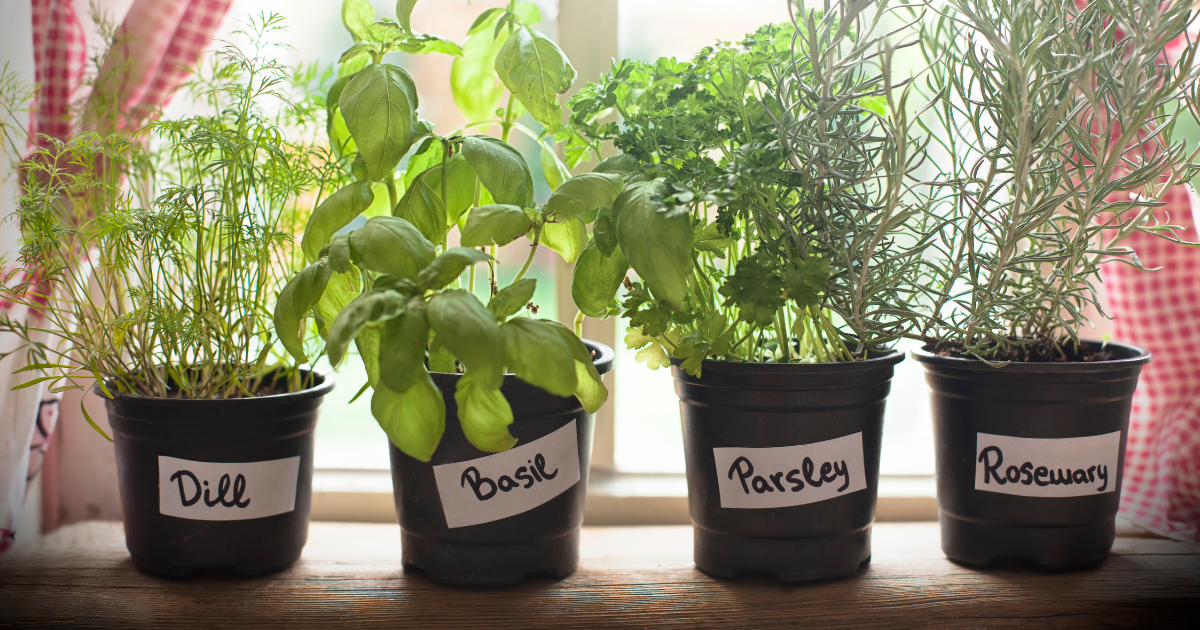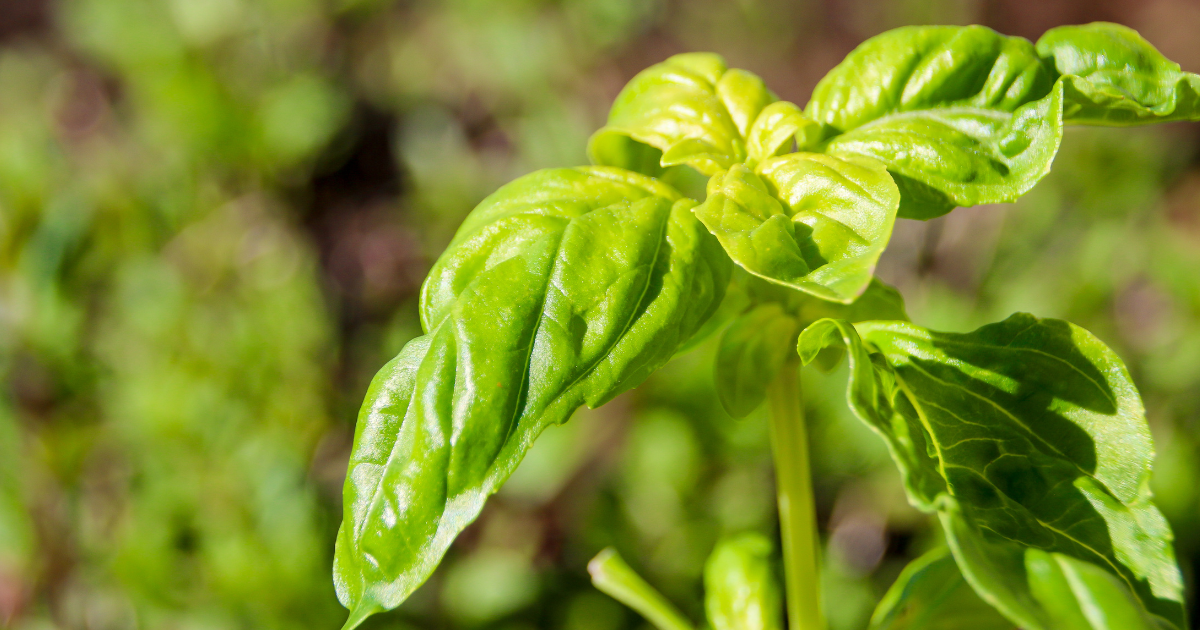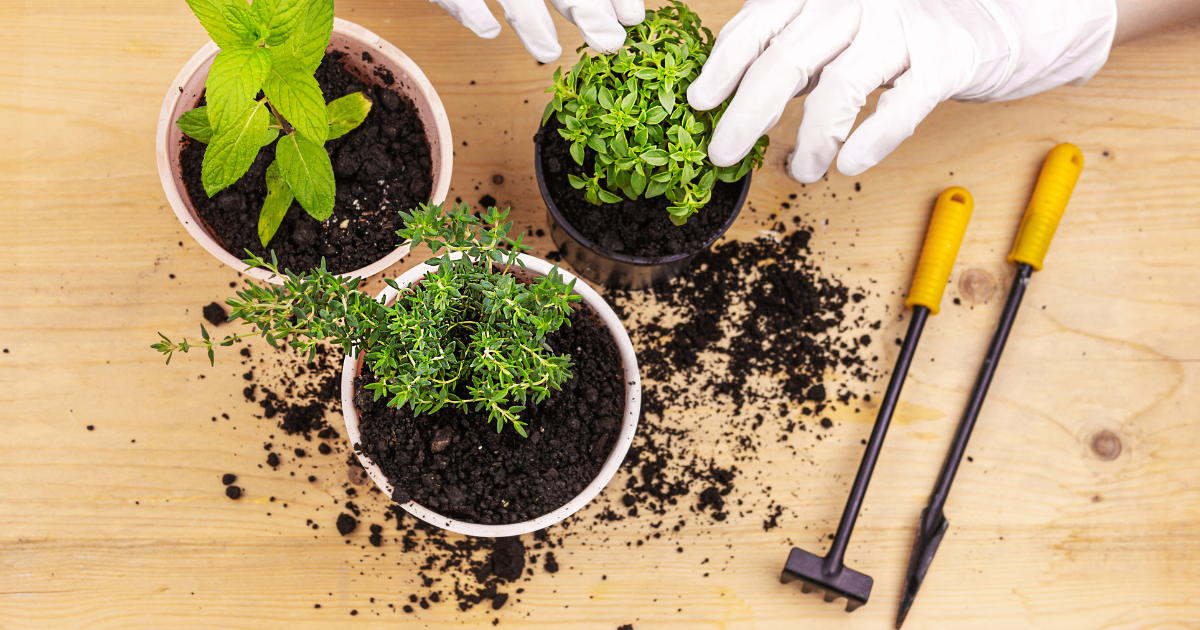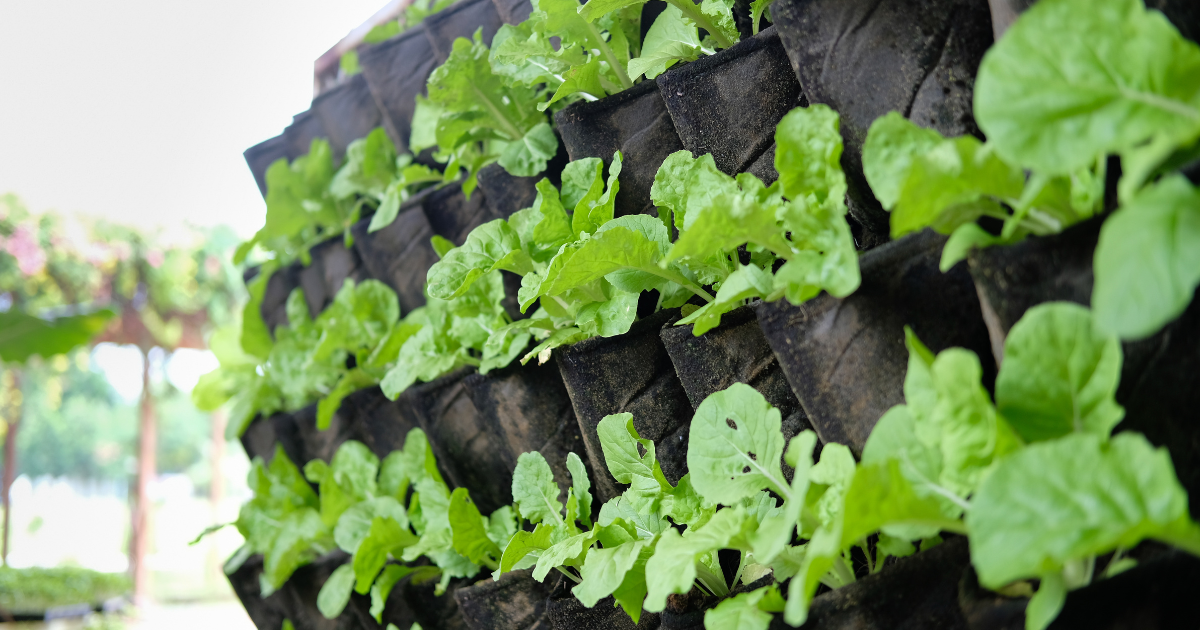Indoor gardening opens up a vibrant world of greenery inside your home, providing fresh air, beauty, and even homegrown edibles regardless of the season. Flora welcomes you to explore the art of cultivating plants indoors, a rewarding journey accessible to everyone, from tentative beginners to seasoned green thumbs. Let's cultivate a thriving indoor garden together with these practical and easy-to-follow tips.
What Is Indoor Gardening?
Indoor gardening refers to the cultivation of plants within an indoor environment, using containers or specialized indoor gardening systems. This form of gardening allows individuals to grow a variety of plants, including flowers, herbs, vegetables, and ornamental plants, inside their homes, offices, or other indoor spaces. Unlike outdoor gardening, indoor gardening provides more control over the growing conditions, such as temperature, light, and humidity, enabling the cultivation of plants year-round regardless of the outdoor climate.
Indoor gardens can range from simple potted plants on windowsills to elaborate setups involving hydroponics and artificial lighting systems. This flexibility makes indoor gardening accessible to a wide range of enthusiasts, from beginners looking to add some greenery to their living spaces to experienced gardeners aiming to optimize plant growth with advanced technologies.
What Vegetables Can You Grow Completely Indoors?
Many vegetables can be grown completely indoors, provided they receive adequate light, water, and nutrients. Here are some vegetables commonly grown in indoor gardens:
Lettuce and Other Leafy Greens:Leafy greens like lettuce, spinach, and kale are among the easiest vegetables to grow indoors. They require relatively low light compared to fruiting plants and can be harvested multiple times by taking the outer leaves and allowing the plants to continue growing.
Herbs:Herbs such as basil, parsley, cilantro, and chives are ideal for indoor gardening. They can thrive on a sunny windowsill and are convenient to snip and use in cooking directly from the plant.
Microgreens:Microgreens are young vegetable greens that are harvested just after the first true leaves have developed. They are quick to grow, highly nutritious, and can be grown in small trays on countertops or windowsills.
Tomatoes: Dwarf or cherry tomato varieties can be successfully grown indoors with sufficient light. They typically require a bit more care and a well-lit spot, such as a south-facing window or under grow lights.
Peppers:Small varieties of peppers, both sweet and hot, can be grown indoors. Like tomatoes, they need plenty of light to produce fruit but can do well in pots or containers.
Radishes:Radishes are another fast-growing vegetable that can be easily grown indoors. They don't require as much light as some other vegetables and can be harvested within a few weeks of planting.
Carrots:Short-rooted or baby carrot varieties can be grown in deeper containers indoors. They require a looser soil mix for the roots to develop properly.
For successful indoor vegetable gardening, it's essential to provide adequate light, which can be natural sunlight from a window or supplemented with artificial grow lights. Regular watering and fertilization according to the needs of each plant type will also help ensure a bountiful indoor harvest.
1. Select the Right Plants for Your Space
Choosing the right plants for your indoor garden hinges on understanding the specific conditions of your space and selecting species that can thrive within those parameters. Herbs, lettuce, spinach, and microgreens are excellent starting points for indoor gardeners due to their adaptability to cooler spaces with indirect light. These plants don't require the intense sunlight some other species do, making them ideal for indoor environments where direct sunlight can be scarce.
However, it's important to note that not every type of fruit or vegetable is suited for indoor gardening. Due to limitations in space and the growing conditions inside a home, dwarf varieties of certain plants, herbs, and even some fruits are more suitable. For example, while standard varieties of vegetables like corn or tomatoes may require too much space or direct sunlight, dwarf peppers, determinate tomatoes, and indoor-friendly fruits such as strawberries or figs can flourish in the constrained space and controlled conditions of an indoor garden.
The selection process involves considering factors such as the available light, space, humidity, and temperature in your indoor garden area. By matching plant choices to these conditions, you can ensure a more successful and rewarding indoor gardening experience.
2. Choose the Right Container
Selecting the appropriate container for your indoor plants is crucial for their health and growth. The right container not only complements your home decor but also supports the plant's root system and accommodates its growth needs. Containers with drainage holes are essential to prevent waterlogging, which can lead to root rot and other moisture-related diseases. Materials like clay or terracotta allow soil to breathe and are particularly beneficial for plants that prefer dry conditions.
Consider the size of the container relative to the plant. A pot that's too small can restrict root growth and lead to nutrient deficiencies, while one that's too large may hold excess moisture, negatively affecting plant health. The choice of container material can also influence soil temperature and moisture retention, factors that are vital to plant health.
3. Lighting, Temperature, and Humidity: The Trifecta of Growth
Proper lighting is a cornerstone of successful indoor gardening. While most houseplants thrive under low to moderate light conditions, fruiting or flowering species require significantly more light, ideally from a south-facing window. This difference underscores the need to understand each plant's specific light requirements and to position plants accordingly within your space to mimic their natural growing conditions as closely as possible.
Temperature and humidity are equally critical to plant health. Most indoor gardens thrive within a temperature range of 65º – 75º F, a spectrum that accommodates a wide variety of plants. However, each species has its own preference, with some thriving in cooler temperatures and others requiring a warmer environment.
Humidity levels also vary widely among plant species. Some tropical plants require high humidity to thrive, whereas succulents and cacti prefer dry air. Regulating humidity can involve using humidifiers, dehumidifiers, or simple practices like grouping plants together to create a microclimate or placing water trays near heating sources to increase moisture levels in the air.
Understanding and managing the trinity of light, temperature, and humidity is essential for fostering a healthy indoor garden. By closely mimicking a plant's natural habitat, you can provide a supportive environment that promotes growth and vitality.
4. Watering Wisdom: The Art of Not Too Much, Not Too Little
Watering is a critical aspect of indoor gardening, where the balance between too much and too little water can significantly impact plant health. Overwatering is one of the most common mistakes made by indoor gardeners, leading to root rot and other diseases due to oxygen-deprived soggy soil. Conversely, under-watering can stress plants, leading to wilted leaves and stunted growth.
The golden rule for watering indoor plants is to maintain damp, but not soggy, soil conditions. This can be achieved by using pots with adequate drainage, which allows excess water to escape, preventing water from pooling at the bottom of the pot. Furthermore, your watering schedule should adapt to the specific needs of each plant, influenced by factors such as the type of plant, the size of the container, the ambient temperature, and the intensity of light exposure.
A practical method to determine when to water is the finger test: insert your finger into the soil up to the first knuckle. If the soil feels dry, it's time to water; if it feels damp, wait a bit longer. This simple technique helps prevent overwatering, ensuring plants receive just the right amount of moisture.
5. Nutrients and Soil: The Foundation of Plant Health
Forindoor plants, soil is more than just a medium to anchor roots—it's a vital source of nutrients and air for healthy growth. Choosing the right soil is crucial; potting soil is specifically formulated for container gardening, offering better drainage and aeration than garden soil, which can compact and hinder root growth in pots. Potting soil also typically includes a blend of ingredients like peat moss, vermiculite, and perlite, which help regulate moisture and make nutrients available to plants.
Fertilization is another key aspect of providing for your plants' nutritional needs. Even the best potting soil will eventually be depleted of nutrients, so adding fertilizer is essential to replenish these vital resources. The type and frequency of fertilizer application depend on the specific needs of your plants and the growth stage they are in. Slow-release fertilizers are a convenient option, gradually supplying nutrients over time, whereas liquid fertilizers provide a more immediate effect.
For those seeking advanced indoor gardening techniques, hydroponics offers a soilless alternative, relying on nutrient-rich water to support plant growth. This method can lead to faster growth and higher yields by allowing direct nutrient uptake through the roots. However, it requires more setup and maintenance than traditional soil-based gardening.
6. Pest Management and Disease Prevention
Pest management and disease prevention are pivotal for maintaining a healthy indoor garden. Regular inspections of your plants can help identify potential problems early, allowing for timely intervention. Look for common signs of distress, such as discoloration, wilting, or the presence of pests on the undersides of leaves.
Implementing healthy gardening practices plays a significant role in preventing the onset of pests and diseases. Ensuring proper spacing between plants promotes adequate air circulation, reducing the risk of fungal diseases. Using sterile potting mix and clean containers can prevent the introduction of pathogens and pests into your indoor garden.
When pests or diseases are detected, opt for organic and least-toxic control methods whenever possible to minimize harm to the plants and the environment. Neem oil, insecticidal soaps, and biological controls such as beneficial insects can be effective against a wide range of indoor gardening pests and diseases.
7. Vertical Gardening and Creative Plant Displays
Vertical gardening is a smart solution for indoor gardeners facing the challenge of limited space. By taking advantage of vertical space through the use of wall-mounted planters, shelves, and hanging baskets, you can create a vibrant, green environment that elevates your living space without compromising floor area. This approach not only maximizes the aesthetic appeal of your indoor garden but also allows for a greater variety of plants to be grown in a relatively small footprint.
Wall-mounted planters offer a sleek, modern way to display plants, making them ideal for adding a touch of greenery to walls that would otherwise remain bare. Shelves can provide a multi-tiered gardening space where plants with similar light and water requirements can be grouped together, creating a visually striking display. Hanging baskets are perfect for trailing plants, adding depth and dimension to your indoor garden setup.
Creative plant displays are not just about saving space; they also contribute to the overall well-being of your indoor garden. Vertical arrangements can improve air circulation around plants, reducing the risk of pests and diseases. Additionally, these displays allow for more efficient use of light, as plants positioned at different heights can receive adequate sunlight without shading each other out.
When planning a vertical garden, consider the weight of the plants and containers, ensuring that walls and shelves are capable of supporting them. Also, pay attention to the watering needs of each plant, as vertical arrangements may require different watering strategies compared to traditional setups.
8. Fertilize
Fertilization is a critical component of maintaining a healthy indoor garden. Plants confined to containers rely on their gardeners to replenish essential nutrients that are depleted over time.Fertilizers provide the macronutrients—nitrogen (N), phosphorus (P), and potassium (K)—along with essential micronutrients that plants need for growth, flowering, and fruiting.
The key to effective fertilization lies in understanding the specific needs of your plants and the nutrient content of your chosen fertilizer. Slow-release fertilizers are a convenient option for indoor gardeners, as they gradually supply plants with nutrients over several months, minimizing the risk of over-fertilization. Liquid fertilizers, on the other hand, offer more immediate nutrient availability but require more frequent application.
It's important to apply fertilizers according to the product instructions and the particular needs of your plants. Over-fertilization can harm plants, leading to nutrient burn and imbalances that can inhibit growth or even cause death. Conversely, under-fertilization can result in poor growth, yellowing leaves, and reduced flowering or fruiting.
In addition to chemical fertilizers, organic options such as compost, worm castings, and fish emulsion can provide a wide range of nutrients while also improving soil structure and microbial activity. These organic amendments are not only beneficial for plant health but also support a more sustainable approach to indoor gardening.
Regular monitoring of plant health and soil conditions will guide your fertilization schedule, ensuring that your indoor garden remains vibrant and productive. Remember, the goal of fertilization is to support the natural growth and development of your plants, creating a lush and thriving indoor oasis.
Fern's Leafy Learnings
Choosing the Right Plants: Select plants that thrive under your home's specific conditions to ensure a lush, thriving indoor garden.
The Importance of Light: Adequate lighting is crucial, especially for fruiting and flowering plants that require more intense sunlight.
Watering Techniques Matter: Overwatering is a common mistake; ensure proper drainage and adjust watering to your plant's needs.
Nutrients and Soil Care: Regular fertilization and the use of quality potting soil are key to healthy plant growth.
Creative Space Utilization: Vertical gardening and innovative planting solutions can maximize your indoor gardening space efficiently.
Deepen Your Roots with Flora
At Flora, we not only bring you a vibrant selection of locally sourced, rare, and delightful plants, but we also serve as your continuous guide in your plant parenting voyage, ensuring every leaf in your sanctuary thrives. With our Flora Pod™ technology and a nurturing community of over 250,000 plant lovers, we cultivate a space where every plant parent - novice or expert - can blossom.
We propagate with a commitment to sustainability, connection, and ceaseless growth, fostering a community where each member, and their plants, are cherished and nurtured.
Crave a lush, thriving green space?Adopt a plant from Flora today!
Flora Pod™ is featured on Shark Tank!




